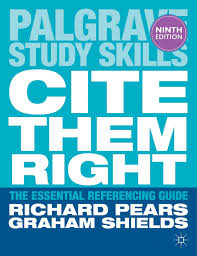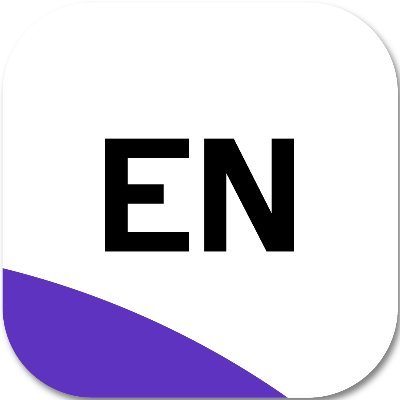Referencing Information
| Site: | QMplus - The Online Learning Environment of Queen Mary University of London |
| Module: | Find It! Use It! Reference It! QMUL Information Literacy Skills |
| Book: | Referencing Information |
| Printed by: | Guest user |
| Date: | Friday, 2 January 2026, 10:50 PM |
Description
This section shows you how to properly reference the sources you use
Table of contents
- 1. How do I correctly reference my work?
- 1.1. The Harvard Referencing Style
- 1.2. The Vancouver Referencing Style
- 1.3. The APA Referencing Style
- 1.4. The MHRA (Modern Humanities Research Association) Referencing Style
- 1.5. OSCOLA (Oxford University Standard for the Citation of Legal Authorities) Referencing Style
- 1.6. Bibliography vs Reference List
- 2. Why do I have to reference my academic work?
- 3. Test your referencing knowledge
- 4. How to manage references
- 5. It's Quiz Time!
1. How do I correctly reference my work?

In this section, we will cover how to reference correctly, using some of the most commonly-used referencing styles. We have also included a section on constructing bibliographies, and there is a fun quiz at the end to test your knowledge.
Referencing styles
Before starting to reference, you should check your course handbook to see which referencing style is required by your school/department/supervisor or tutor.
But whatever style you decide to use, it's useful to remember that all formats of referencing are made up of two parts:
1. The in-text citation
2. The reference list
The in-text citation is a 'marker' placed in the text at an appropriate point to indicate a reference. The marker can be a number - for example, 1 or [1] - when using a numerically based referencing system, or the author's surname and the year of publication when using an author-date system - (Lewis, 2018).
The reference list is the section of your essay where you list all of your sources in full, either in number order where the number matches the order in which the source appears in the text, or in alphabetical order using the author's surname.
When you’ve decided on your referencing style, make sure you stick to it throughout your essay. Consistency is an important part of referencing. Don't combine different styles as this will confuse your reader.
The following are the main referencing styles in use at Queen Mary. Read a little more, and then try some of the activities on these pages so that you know you are getting it right.
Start using Cite Them Right Online (CTRO) to learn more about this important subject. CTRO is an excellent interactive guide to referencing. You can search for sources, view correct examples and construct references which can be exported to your essays and assignments. Access Cite Them Right Online (CTRO)
The physical book version of Cite Them Right can also be found in the Library's Study Skills Collection under the classmark PN171.F56 PEA. You can find more books on referencing via Library Search.
Need help or advice about anything on this page? Contact Academic Skills Centre
1.1. The Harvard Referencing Style

The Harvard referencing style is a commonly used author-date system.
Whenever you quote another person's words or specifically refer to their work you must cite the author's surname and the year of publication. For example:
Macromolecules are the central molecules of all living organisms (Liljas, 2009)... or Lijas (2009) notes that macromolecules are the central molecules of all living organisms...
This would be inserted into your reference list/bibliography as:
Liljas, A. (2009). Textbook of structural biology. Hackensack, NJ: World Scientific.
The following are some examples of how different items are referenced:
Learn more about the Harvard referencing style using Cite Them Right Online: https://www.citethemrightonline.com/
You can find more books on referencing via Library Search.
Need help or advice about anything on this page? Contact Academic Skills Centre
1.2. The Vancouver Referencing Style

Vancouver is known as a numeric referencing style, and is used in biomedical, health and some science publications.
Whenever you refer to another person’s work, you need to insert a footnote number in either superscript or in brackets in your text. For example:
Dinosaurs had to be cold blooded or they would overheat given their large body size.1
Dinosaurs had to be cold blooded or they would overheat given their large body size. (1)
This would be inserted into your reference list/bibliography as:
Spotila JR. Sea turtles: a complete guide to their biology, behaviour and conservation. Maryland: The Johns Hopkins University Press; 2004.
Authors should be cited by surname, then initials with no comma between surname and initials.
Only the first word and any proper nouns are capitalised and the title is not underlined.
The reference list/bibliography should be produced in the order you cite the works in your text, not in alphabetical order.
The following are some examples of how different items are referenced:
Learn more about the Vancouver referencing style by using Cite Them Right Online: https://www.citethemrightonline.com/
You can find more books on referencing via Library Search.
Need help or advice about anything on this page? Contact Academic Skills Centre
1.3. The APA Referencing Style

The APA style, created by the American Psychological Association, is used by writers around the world for writing and publishing in the Social and Behavioural Sciences. APA is an author-date style similar to the Harvard style, but with its own characteristics in terms of formatting, spelling, construction of tables and graphs. It can also contain footnotes which allows authors to include additional information.
APA is a style used in academia across various disciplines as well as in many scientific journals, and therefore it might appeal not only to students and researchers in the Psychological-Medical field, but also to students of Social Sciences/Politics.
Whenever you quote another person's words or specifically refer to their work you must cite the author's surname and the year of publication. For example:
There is huge variation as to how the concept of intelligence is defined (Gross, 2020) ... or Gross (2020) suggests that there is huge variation as to how the concept of intelligence is defined
This would be inserted into your reference list/bibliography as:
Gross, R. (2020). Psychology: the science of mind and behaviour (8th ed.). Hodder.
The following are some examples of how different items are referenced using the APA system:
Learn more about the APA referencing style by using Cite Them Right Online: https://www.citethemrightonline.com/
You can find more books on referencing via Library Search.
Need help or advice about anything on this page? Contact Academic Skills Centre
1.4. The MHRA (Modern Humanities Research Association) Referencing Style

* There is now a new version of MHRA. Please see full details in Fourth (2024) edition of MHRA style, particularly chapter 7: Referencing on citing different sources from books, chapters , works of art, interviews...etc.
If you have been using the old version - the Third Edition, please check out Changes to MHRA Styles.
MHRA is a numeric referencing style published by the Modern Humanities Research Association.
Whenever you refer to another person’s words or ideas in your work, you need to insert a footnote number in your text. For example:
Giroux sums up how Disney transforms every child into a lifetime consumer of Disney products and ideas.1
When you refer to the publication for the first time, use full bibliographic details in the footnote.
Henry Giroux, The Mouse that Roared: Disney and the end of Innocence ( Rowland & Littlefield Publishers, 1999), p. 25.
*Note from above that the first name appears in full before the surname.
When you refer to the same book later on, you can provide the information in a shortened form:
Giroux, Mouse that Roared, p. 25.
*Note from above that just the surname is necessary.
The following are some examples of how different items are referenced:
Book
First name and surname of author, title of book (italicised, all important words capitalised) ( publisher, year of publication), page numbers (p. for one page, pp. for more than one page).
Philip Seargent, The Future of Language: How Technology, Politics and Utopianism are Transforming the Way we Communicate ( Bloomsbury Academic, 2023), p. 21.
Chapter from a book
First name and surname of author(s), title of chapter in single quotation marks, in title of book (italicised, all important words capitalised), ed. by first name and surname of authors(s) ( publisher, year of publication), page numbers (p. for one page, pp. for more than one page).
Martin Elsky, ‘Words, Things, and Names: Jonson’s Poetry and Philosophical Grammar’, in Classic and Cavalier: Essays on Jonson and the Sons of Ben, ed. by Claude J. Summers and Ted-Larry Pebworth (University of Pittsburgh Press, 1982), pp. 31–55 (p. 41).
Journal article
First name and surname of author, title of article in single quotation marks, title of journal (italicised), volume number (date of publication), page numbers of article (with specific page reference), doi number.
Doriane Zerka, ‘Constructing Poetic Identity: Iberia as a Heterotopia in Oswald von Wolkenstein’s Songs’, MLR, 114.2 (2019), pp. 274–93 (p. 279), doi:10.5699/modelangrevi.114.2.0274.
Website
Publication/name of author, title of article in single quotation marks, year published or last updated <URL> [date accessed].
The Economist , 'The Digital Degree', 2014 <http://www.economist.com/news/briefing/21605899-staid-higher-education-business-about-experience-welcome-earthquake-digital>; [accessed 28 July 2014].
The MHRA Style Guide does not contain an example of how to reference a lecture. The example below is based on the MHRA guidelines.
Lecture on QMplus
First name and surname of lecturer, title of lecture in single quotation marks, module code: module title (italicised). Year. Available at: URL of VLE [date accessed].
Stephen Henneberg, ‘Marketing Activities’, BUSM094: Introduction to Marketing Theory. 2014. Available at: http://qmplus.qmul.ac.uk/course/view.php?id=53 [Accessed 22 October 2014].
Live lecture
First name and surname of lecturer, title of lecture in single quotation marks, module code: module title (italicised). Location. Date of lecture.
Dr Phillipa Williams, 'Understanding 'Research' and Health Inequalities', GEG5013: Geographical Research in Practice. Queen Mary University of London. September 2014.
Learn more about the MHRA referencing style by using Cite Them Right Online: https://www.citethemrightonline.com/
You can find more books on referencing via Library Search.
Need help or advice about anything on this page? Contact Academic Skills Centre
1.5. OSCOLA (Oxford University Standard for the Citation of Legal Authorities) Referencing Style

The OSCOLA style is a set of rules specially designed to reference legal sources.
OSCOLA uses numeric references in the text linked to full citations in footnotes, and is characterised by light punctuation and heavy use of abbreviations.
Whenever you refer to another person’s work, you need to insert a footnote number in superscript in your text and a footnote at the bottom of the page. In longer pieces of work there will also be a bibliography at the end.
Cartwright 1 in his book on contract law ...
This would then be inserted as a footnote like this:
1. John Cartwright, Contract law: an introduction to the English law of contract for the civil lawyer (3rd edn, Hart Publishing 2016).
In subsequent citations you can just provide a cross-citation in brackets to the full citation e.g. 2. Cartwright (no 1). Ibid can also be used where a citation directly follows a previous citation of the same work.
Cartwright J, Contract law: an introduction to the English law of contract for the civil lawyer (3rd edn, Hart Publishing 2016)
Need help or advice about anything on this page? Contact Academic Skills Centre
1.6. Bibliography vs Reference List

A bibliography or a reference list is an essential part of academic writing that comes at the end of your written assignment.
A bibliography is a list of all the books, articles and sources you have used in your written work. It includes background reading which are not cited.
A reference list is a list of all the books, articles and sources you have cited in your written work.
Do check with your lecturer if you are not sure if a reference list or a bibliography is required.
Refer to Cite Them Right Online for more guidance with bibliographies and reference lists:

Need help or advice about anything on this page? Contact Academic Skills Centre
2. Why do I have to reference my academic work?

It is important that you always reference your work. Correctly referencing your work means that you:
- acknowledge the contribution that other people have made to your work
- produce work that is credible and accountable
- help the reader to locate the sources you have used to write your coursework: remember, someone else - not least your tutor - may wish to consult a particular book chapter or article that you have used
The essential point of referencing then, is to ensure that your work is demonstrably honest and reliable, and to make the sources and resources you have used as traceable as possible.
Find out more about referencing in the following chapters:
Chapter 2 gives you an overview of some of the most commonly used referencing styles.
Chapter 3 tells you about different reference management tools.
Need help or advice about anything on this page? Contact Academic Skills Centre
3. Test your referencing knowledge
It is important that you construct your bibliographies correctly! Review the information and links we've provided in the previous chapters before trying the quiz below:
The next section of the module introduces you to free software that will really help you with putting together the perfect bibliography!
Need help or advice about anything on this page? Contact Academic Skills Centre
4. How to manage references
As you progress in your studies you will almost certainly find that you build up a considerable stock of academic information - references to articles that you have consulted and found particularly useful, PDFs, book chapters that you need to read at some point and so on; you may even wish to keep a note of things that are not relevant, simply so that you know you don't need to check these sources again.
Keeping this volume of information in some sort of order can be a challenge but please don't worry if you you start to feel overwhelmed by your growing library of references - you can store and manage your references effectively by using specially designed reference management software.
4.1. Introduction to Referencing Management Software
There are a number of reference management software packages which are freely available. We will introduce you to three of the most popular.Each of these packages has various advantages, summarised on the table below. You can access each and set up accounts from the following pages - experiment and find which one suits your particular requirement.
4.2. EndNote

There are two versions of EndNote, a desktop version which you can install on your own computer, and an online version which you can use from anywhere. An enhanced version of EndNote Online is freely available to all Queen Mary users.
Use the Library's Guide to Endnote to find out how to sign up for an online account, and how to access the desktop version. Watch our short videos on how to use both versions of EndNote effectively.
Need help or advice about anything on this page? Contact Academic Skills Centre They can offer support and guidance for getting the best from EndNote.
4.3. Mendeley
Mendeley is another freely available reference manager; it also functions as an academic social networking site which offers you the chance to collaborate online with other researchers and find out all about the latest research in your field.
See Guide to Mendeley.
Or go to the Mendeley website to create your account and find more information on how to use Mendeley.
Need help or advice about anything on this page? Contact Academic Skills Centre
4.4. Zotero
Zotero is a powerful research tool that is easy to use. It helps you gather, organise and analyse your source materials, and then share the results of your research.
With Zotero you can collect PDFs, images, audio and video files, screenshots of webpages and so on.
See Guide to Zotero.
Or go to Zotero's website to create your account and find out for more information on how to use Zotero.
5. It's Quiz Time!
We've provided you with a lot of practical guidance in this section of the module that will improve your referencing skills. Of course the more you apply the techniques outlined here the more you will improve: practice makes perfect.
See how much you can remember by trying this quiz:
Need help or advice about anything on this page? Contact Academic Skills Centre